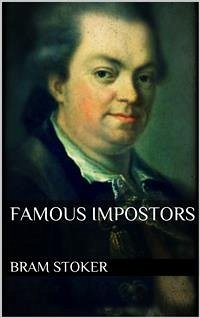The subject of imposture is always an interesting one, and impostors in one shape or another are likely to flourish as long as human nature remains what it is, and society shows itself ready to be gulled. The histories of famous cases of imposture in this book have been grouped together to show that the art has been practised in many forms—impersonators, pretenders, swindlers, and humbugs of all kinds; those who have masqueraded in order to acquire wealth, position, or fame, and those who have done so merely for the love of the art. So numerous are instances, indeed, that the book cannot profess to exhaust a theme which might easily fill a dozen volumes; its purpose is simply to collect and record a number of the best known instances. The author, nevertheless, whose largest experience has lain in the field of fiction, has aimed at dealing with his material as with the material for a novel, except that all the facts given are real and authentic. He has made no attempt to treat the subject ethically; yet from a study of these impostors, the objects they had in view, the means they adopted, the risks they ran, and the punishments which attended exposure, any reader can draw his own conclusions.
Bitte wählen Sie Ihr Anliegen aus.
Rechnungen
Retourenschein anfordern
Bestellstatus
Storno









